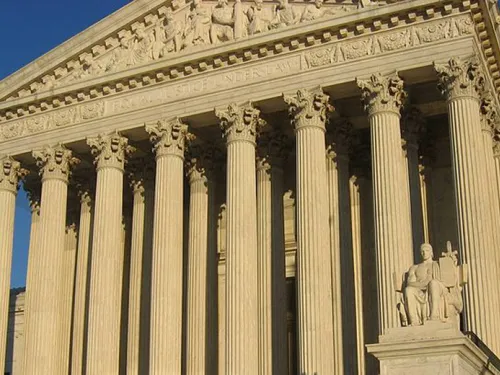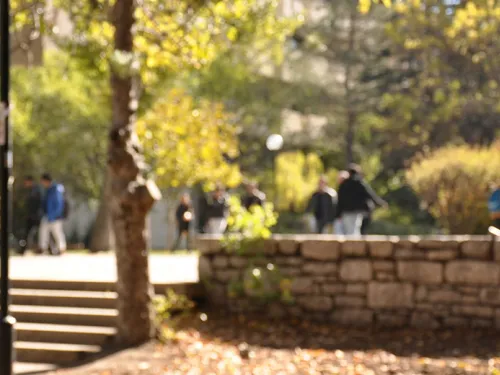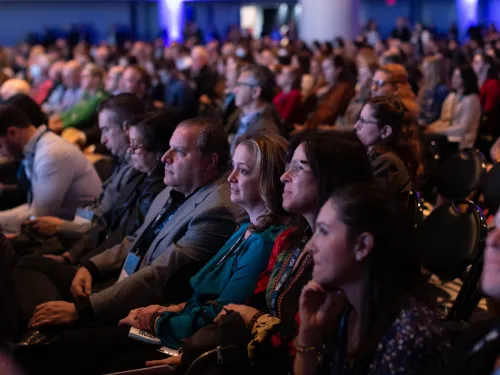by: Jinnie Array
March 16, 2015
Last week, disturbing video emerged of fraternity brothers from the Sigma Alpha Epsilon (SAE) chapter at the University of Oklahoma laughing while singing a racist chant: “There will never be a ni**** SAE. You can hang him from a tree, but he can never sign with me. There will never be a ni**** SAE.”
The news comes on the heels of the recent findings from a Department of Justice investigation in Ferguson, MO which, among other things, revealed a deeply troubling series of racist emails by Ferguson officials. One email, for example, in November 2008 predicted that President Obama would not be president much longer because “what black man holds a steady job for four years.”
With few exceptions, people have denounced these incidents as racist. Immediately after the news broke, the president of the University of Oklahoma condemned the students’ behavior and severed all ties between the university and the local SAE chapter. At the same time, the national SAE headquarters shut down the local chapter. Ferguson’s municipal court clerk was fired and the chief of police and two police officers resigned after the DOJ report was released.
It is certainly appropriate to condemn this racism and teach people to challenge biased language, but it is not enough. Today, thankfully, such overt racism is much less common than in the past. Still, there is an undercurrent of much subtler, more deeply buried bias that still flows through America. While fewer and fewer Americans would use overt offensive, derogatory terms, many of us—consciously or not—have implicit biases (unconscious attitudes, stereotypes or unintentional actions that we direct at a member of a group simply because of that person’s membership in that group).
The implicit biases embedded in, for example, the racial disparities in the criminal justice system or the segregated nature of the college fraternity system, can be as or more harmful than this hateful and derogatory language.
From a very early age we learn to differentiate between things that are the same and things that are different: one of these things is not like the other one. Science shows that we make the same snap judgments about other people, using what we know and what we assume to categorize things. While that gives us important tools in making sense of the world, when paired with societal biases and stereotypes it can become harmful. As a result of subtle messages throughout society, most people—whether or not they intend it, and often when they expressly do not—have some implicit biases.
Studies have found, for example, that doctors are more likely to prescribe pain medication for white patients with a broken leg than African American or Latino patients. Law firm partners, when asked to evaluate a memo written by a hypothetical associate, scored the memo lower and found more mistakes when they were told it had been written by an African American. Another study found that, in order to get a call for an interview, applicants with typically black names (such as Jamal or Lakisha) had to send out 50 percent more resumes.
It is easy to dismiss the racism at SAE and in Ferguson as an aberration and something we would never engage in ourselves. It is much harder to deny that we have any implicit bias, especially if you take the Implicit Association Test. Because implicit bias begins at a very early age and develops over the course of a lifetime, there are ways we can parent, teach and interact with young people to counteract these direct and indirect messages:
- Make your home, classroom and school environment as diverse as possible so that from an early age, you work to counteract negative biases. This means creating an inclusive and culturally sensitive classroom with books, classroom displays, bulletin boards, holiday celebrations, videos, stories, textbooks, etc. and make sure different perspectives are reflected in your classroom curriculum.
- Affirm and reflect the different aspects of identity represented in your classroom and help young people deconstruct assumptions, stereotypes and labels they have about different groups of people.
- Teach students what overt and implicit bias are and seek their participation in pro-actively doing something about it.
Para Enfrentar el Racismo, También Debemos Mirarnos en el Espejo
Hace poco tiempo apareció un perturbador vídeo de los miembros de la fraternidad del capítulo Sigma Alpha Epsilon (SAE) de la Universidad de Oklahoma, en el que ríen mientras cantan un cántico racista: “Nunca habrá un ne***** en SAE. Puedes colgarlo de un árbol, pero él nunca podrá asociarse conmigo. Nunca habrá un SAE ne*****".
La noticia le pisa los talones a los recientes resultados de una investigación en Ferguson, MO realizada por el Departamento de Justicia que, entre otras cosas, reveló una muy preocupante serie de correos electrónicos racistas emitidos por funcionarios de Ferguson. Por ejemplo, un correo predijo en noviembre de 2008 que el Presidente Obama no sería presidente por mucho más tiempo porque “qué hombre negro es capaz de tener un trabajo constante durante cuatro años”.
Con pocas excepciones, la gente ha denunciado estos incidentes como racistas. Inmediatamente después de que aparecieran las noticias, el presidente de la Universidad de Oklahoma condenó el comportamiento de los estudiantes y cortó todos los vínculos entre la universidad y el capítulo local del SAE. Al mismo tiempo, la oficina nacional del SAE cerró el capítulo local. El secretario del juzgado municipal de Ferguson fue despedido y el jefe del policía y dos oficiales de policía renunciaron cuando el informe de Departamento de Justicia fue dado a conocer.
Ciertamente es apropiado condenar este racismo y enseñar a la gente a enfrentar el lenguaje prejuiciado, pero eso no es suficiente. Hoy día, afortunadamente, el racismo tan abierto es mucho menos común que en el pasado. No obstante, en Estados Unidos todavía hay una corriente subterránea de prejuicio mucho más sutil, enterrado más profundamente. Aunque cada vez menos estadounidenses utilizarían términos ofensivos o despectivos abiertamente, muchos de nosotros −consciente o inconscientemente− tenemos prejuicios implícitos (actitudes inconscientes, estereotipos o acciones no intencionales que dirigimos contra un miembro de un grupo simplemente por ser miembro de ese grupo).
Los prejuicios implícitos arraigados en, por ejemplo, las disparidades raciales en el sistema de justicia criminal o la naturaleza segregada del sistema de fraternidades universitarias, pueden ser tanto o más dañinos que este lenguaje despectivo y de odio.
Desde muy temprana edad aprendemos a distinguir entre las cosas que son iguales y las cosas que son diferentes: una de estas cosas no es como la otra. La ciencia demuestra que hacemos los mismos juicios rápidos sobre la gente, usando lo que sabemos y lo que asumimos para clasificar cosas. Aunque eso nos da importantes herramientas para entender el mundo, cuando se une con prejuicios y estereotipos sociales puede llegar a ser perjudicial. Como resultado de mensajes sutiles en la sociedad, la mayoría de la gente −lo quiera o no, y a menudo cuando expresamente no lo quiere− tiene algunos prejuicios implícitos.
Por ejemplo, los estudios han encontrado que los médicos tienen más tendencia a prescribir medicamentos para el dolor a los pacientes blancos con una pierna rota que a los pacientes afro-americanos o latinos. Cuando se le pidió a los socios de una firma de abogados evaluar un memo escrito por un asociado hipotético, lo calificaron menos bien y encontraron más errores cuando les dijeron que había sido escrito por un afro-americano. Otro estudio encontró que para conseguir una cita para una entrevista, los aspirantes con nombres típicamente negros (tales como Jamal o Lakisha) tuvieron que enviar 50% más currículos
Es fácil descartar el racismo en el SAE y en Ferguson como una aberración y algo en lo que nunca participaríamos nosotros mismos. Es mucho más difícil negar que tenemos algún prejuicio implícito, especialmente si tomamos la Prueba de Asociación Implícita. Debido a que el prejuicio implícito comienza en una edad muy temprana y se desarrolla a lo largo de la vida, hay maneras en que podemos criar, enseñar e interactuar con los jóvenes para contrarrestar estos mensajes directos e indirectos:
- Haga el ambiente de su hogar, salón de clase y escuela tan diverso como sea posible, de modo que desde una edad temprana usted contribuya a contrarrestar los prejuicios negativos. Esto significa crear un aula inclusiva y culturalmente sensible con libros, exhibiciones, carteleras, celebraciones de festividades, videos, cuentos, textos, etc. y asegurarse de que esas diversas perspectivas se reflejen en el currículo de sus cursos.
- Refuerce y refleje los diversos aspectos de identidad representados en su aula y ayude a los jóvenes a deconstruir los estereotipos, suposiciones y etiquetas que tienen sobre diversos grupos de gente.
- Enseñe a los estudiantes qué son los prejuicios abiertos e implícitos y busque su participación para hacer algo al respecto proactivamente.









